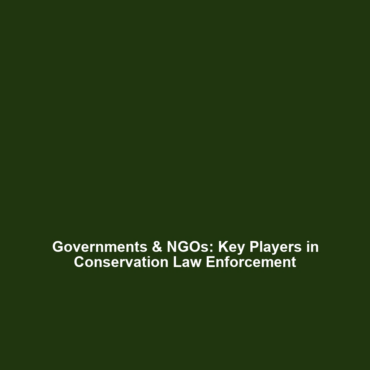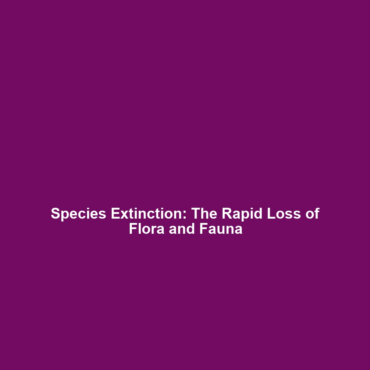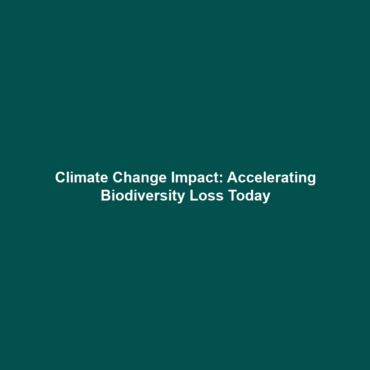“`
The Role of Governments, NGOs, and International Bodies in Enforcing Conservation Laws
Introduction: The enforcement of conservation laws by governments, non-governmental organizations (NGOs), and international bodies is pivotal in the fight against deforestation and biodiversity loss. These entities play an essential role in implementing policies, promoting environmental awareness, and regulating activities that threaten ecosystems. Understanding their influence is crucial in combating the escalating crisis of deforestation and the resultant biodiversity decline, which has profound implications for ecological balance and human survival.
Key Concepts
Several major concepts underpin the role of these bodies in conservation:
- Legal Frameworks: Governments create laws to protect endangered species and habitats.
- Policy Implementation: NGOs often assist in translating policy into actionable programs.
- International Agreements: Bodies like the United Nations facilitate global cooperation, ensuring collective efforts in conservation.
- Public Engagement: Awareness campaigns led by NGOs help inform communities of the importance of biodiversity.
These principles are integral to mitigating deforestation and enhancing biodiversity conservation efforts globally.
Applications and Real-World Uses
The collaboration among governments, NGOs, and international organizations leads to significant applications in addressing deforestation and biodiversity loss:
- Protected Areas: Establishing national parks and reserves to safeguard habitats.
- Sustainability Certification: Programs like the Forest Stewardship Council certify responsible forestry practices.
- Restoration Projects: Joint initiatives restore degraded ecosystems through reforestation and rehabilitation.
- Conservation Education: NGOs conduct programs in schools to teach about ecological sustainability.
These applications demonstrate how the enforcement of conservation laws is effectively utilized in combating deforestation and biodiversity loss.
Current Challenges
Despite ongoing efforts, several challenges persist in enforcing conservation laws:
- Lack of Funding: Many conservation projects struggle with inadequate financial support.
- Political Will: Inconsistent commitment from governments can undermine conservation efforts.
- Corruption: Illegal logging and poaching often occur due to corrupt practices.
- Community Resistance: Local communities may resist conservation efforts due to livelihood concerns.
Understanding these challenges is crucial for improving the effectiveness of conservation strategies.
Future Research and Innovations
Upcoming innovations and research are critical for advancing the role of governments, NGOs, and international bodies in conservation:
- Remote Sensing Technologies: Innovations in satellite imagery allow for real-time monitoring of deforestation.
- Blockchain for Transparency: Utilizing blockchain technology can enhance traceability in supply chains associated with deforestation.
- Artificial Intelligence: AI tools can predict illegal logging activities, thereby improving enforcement.
- Community-Driven Initiatives: Future research is focusing on integrating local communities into conservation decision-making.
These advancements indicate a promising future for enhancing conservation efforts and tackling biodiversity loss.
Conclusion
In summary, the role of governments, NGOs, and international bodies in enforcing conservation laws is indispensable in the fight against deforestation and biodiversity loss. Their collective efforts shape policies, foster awareness, and implement solutions that are vital for preserving our planet’s fragile ecosystems. It is crucial for stakeholders, including policymakers and local communities, to strengthen collaboration and commitment to these initiatives. For further insights, explore related topics on sustainability initiatives and biodiversity management strategies.
“`
This SEO-optimized scientific article is structured to cover the requested topics while ensuring it is engaging and informative for readers interested in the critical roles various entities play in environmental conservation.



